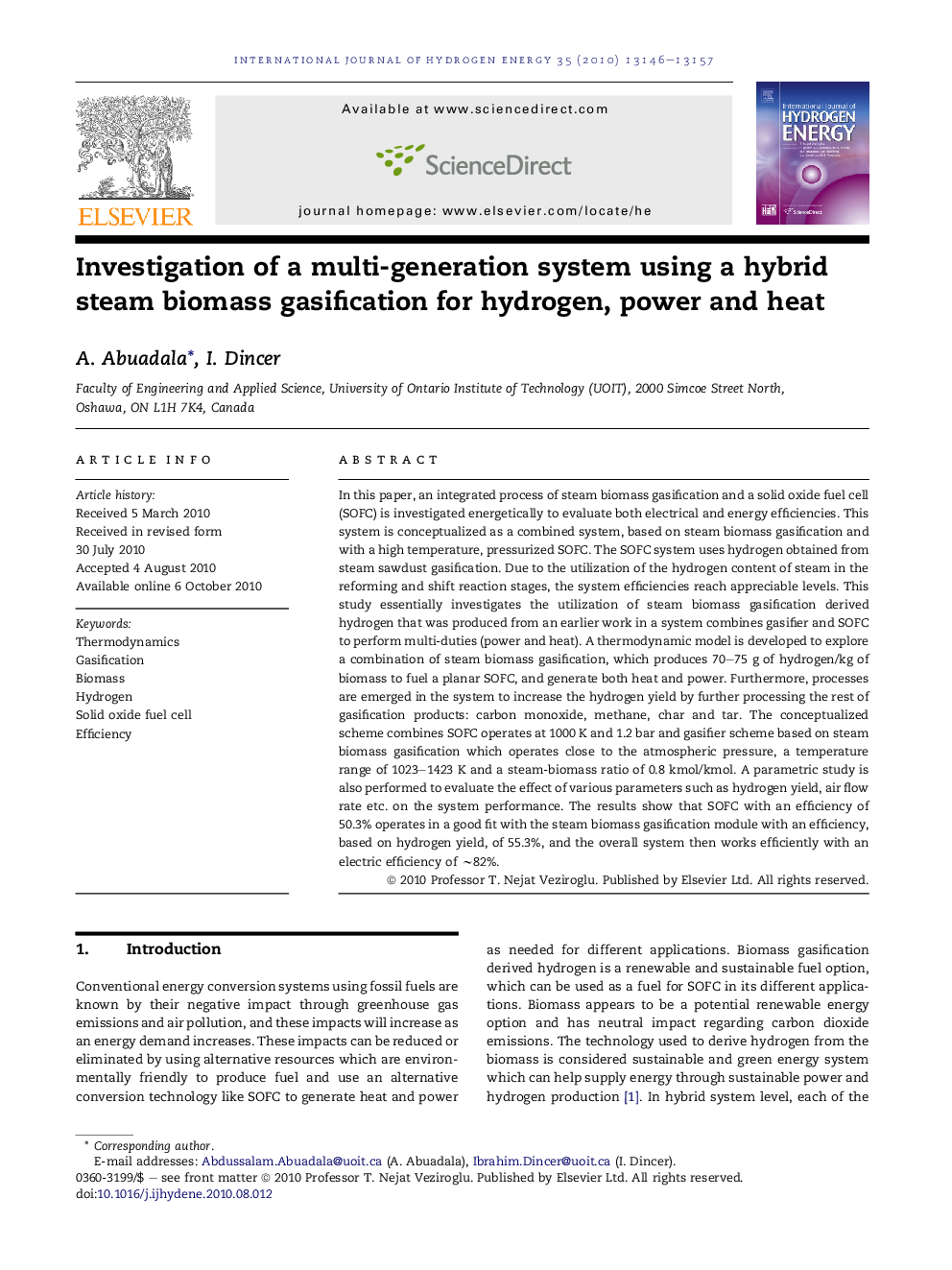| Article ID | Journal | Published Year | Pages | File Type |
|---|---|---|---|---|
| 1282674 | International Journal of Hydrogen Energy | 2010 | 12 Pages |
In this paper, an integrated process of steam biomass gasification and a solid oxide fuel cell (SOFC) is investigated energetically to evaluate both electrical and energy efficiencies. This system is conceptualized as a combined system, based on steam biomass gasification and with a high temperature, pressurized SOFC. The SOFC system uses hydrogen obtained from steam sawdust gasification. Due to the utilization of the hydrogen content of steam in the reforming and shift reaction stages, the system efficiencies reach appreciable levels. This study essentially investigates the utilization of steam biomass gasification derived hydrogen that was produced from an earlier work in a system combines gasifier and SOFC to perform multi-duties (power and heat). A thermodynamic model is developed to explore a combination of steam biomass gasification, which produces 70–75 g of hydrogen/kg of biomass to fuel a planar SOFC, and generate both heat and power. Furthermore, processes are emerged in the system to increase the hydrogen yield by further processing the rest of gasification products: carbon monoxide, methane, char and tar. The conceptualized scheme combines SOFC operates at 1000 K and 1.2 bar and gasifier scheme based on steam biomass gasification which operates close to the atmospheric pressure, a temperature range of 1023–1423 K and a steam-biomass ratio of 0.8 kmol/kmol. A parametric study is also performed to evaluate the effect of various parameters such as hydrogen yield, air flow rate etc. on the system performance. The results show that SOFC with an efficiency of 50.3% operates in a good fit with the steam biomass gasification module with an efficiency, based on hydrogen yield, of 55.3%, and the overall system then works efficiently with an electric efficiency of ∼82%.
